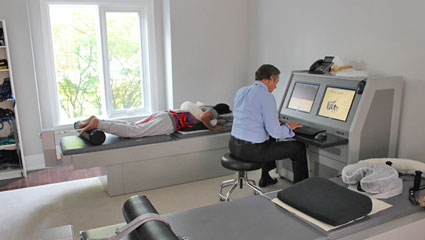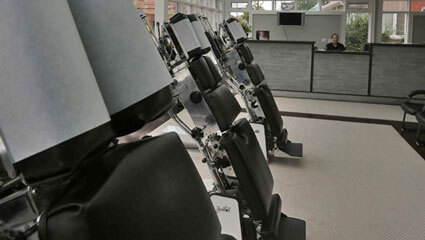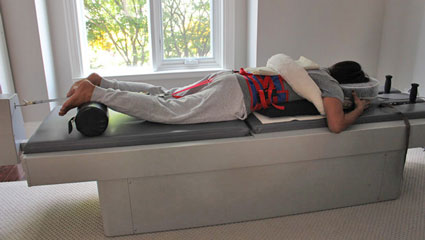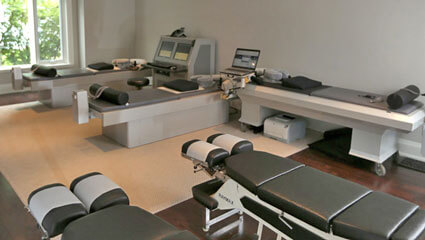VAX-D Spinal Decompression
Decompressive care is not a one or two treatment event. Practice members will require a specially designed program of care to see effective results.
Getting Started
Prior to starting a care program, a full and correct diagnosis will need to be rendered. This is formed through a thorough history, physical and functional exam as well as x-ray, EMG, thermographic, MRI and / or CT investigations. These tests will produce a clear picture as to the cause of the problem and from there a treatment plan can be created that will address the cause or causes of the problem.
A herniation begins when the inner nucleus pulposis bulges through the annular fibrosis, causing a bulging or protruding disc. This bulge may push on a spinal nerve. As the pressure continues the disc can bulge further or herniate resulting in nuclear fluid “leaking” out of the disc. At this point, the body’s autoimmunie response is activated and this causes localized inflammation and progressive deterioration of the nerve root if left unattended. If the herniation is located in the cervical spine (neck) the symptoms can range from neck pain, with or without arm pain, to numbness and tingling.
Muscle weakness can be common as well. If the herniation is located in the lumbar spine (low back) the symptoms can range from low back pain, with or without leg pain, to muscle weakness, to numbness, tingling and/or burning in the leg or foot. This happens because the nerves that exit the spinal cord innervate the skin in the arms and legs. They are responsible for sensation and for movement of the muscles in the arms and legs. They are also responsible for reflexes and reflex movements. This is the reason some individuals with this condition experience extremity pain, burning, numbness, tingling and weakness.
Generally with one disc affected, 25 decompression sessions are required to restart the pumping mechanism of the disc. If two discs are involved generally 30 session are required and if three discs 35 sessions. This is a guide only and not to be taken as the exact number as an individual’s age, duration of the condition and other specifics will affect the number of sessions required to correct the problem.
This does not mean that it will take that many sessions to “feel better”, in fact practice members often start to “feel better” by the 15th session, but in this case, it’s not how you are feeling but how you are healing that is most important. The most important aspect is to make sure that the disc is fully resolved, hydrated and back into central alignment before graduation to corrective care, otherwise there is a chance that symptoms could return.
The initial period of treatment is very intense with the first 20 sessions being done daily, Monday to Friday. Once that period is complete practice members are re-evaluated and care is either tapered down or continues intensely depending on their results to date. The entire VAX-D process takes approximately two to three months to complete. After that, spinal corrective care program is advised to improve spinal alignment and mobility while slowly transitioning practice members back to doing daily activities again.
The key to sustaining and achieving further recovery is spinal corrective care. The Canadian Disc Institute corrective care program is built on a structural corrective model which addresses the initial cause of the problem – abnormal pressures placed on the disc due to abnormal alignment. The latter half of the decompressive program is designed to transition from decompressive care to structural correction and a gradual return to daily activities. Home based exercises and activities are used to improve mobility and flexibility while enhancing recovery.
Digital X-rays and MRIs Available
We have digital X-ray facilities located on-site. If you need an MRI, we can refer you to have one taken within 24 hours. You’ll have access to all the diagnostic testing you need with us. Call today!
CONTACT US »




